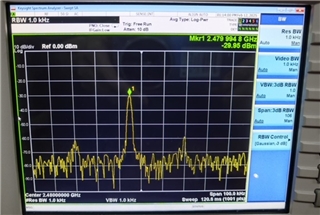Other Parts Discussed in Thread: CC2640, LP-XDS110ET, LAUNCHXL-CC2640R2, ENERGYTRACE
Tool/software:
For our application, based on CC2640R2F chipset, design a BLE module, power supply use DC/DC converter mode, recently we found that small amount module are not working properly, when checking the hardware signal, we found that DCDC_SW pin has no square signal, it can measure 1.61V signal on DCDC_SW and the min voltage measured on VDDR is about 1.57V, both signal are measure via oscilloscope. we also measure the voltage of launchpad board, the voltage on VDDR is about 1.61V.
so we are wondering:
- in which case, the internal DC/DC will not start up, please not that the supply voltage on VDDS, VDDS2 and VDDS3 is nomal with 3.3V
- why the measured voltage on VDDR is 1.61 while according to spec and swra640 document, it should be 1.68V to 1.95V








